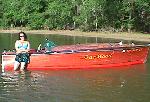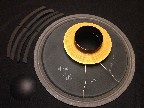edgewound, AFAIK this absolutely confirms your statement that my 2130 is equivalent to the K120:
http://cgi.ebay.com/ws/eBayISAPI.dll...=7413313412&id=
ebay seller says he removed this original K120 from his Fender cabinet.
The K120 surround is identical to my 2130 surround.
The K120 cone number is the same as my 2130, with the additional "16" penciled on it in white, indicating a 16ohm voice coil. My 2130 cone has "K" penciled on it in yellow.




 Reply With Quote
Reply With Quote










